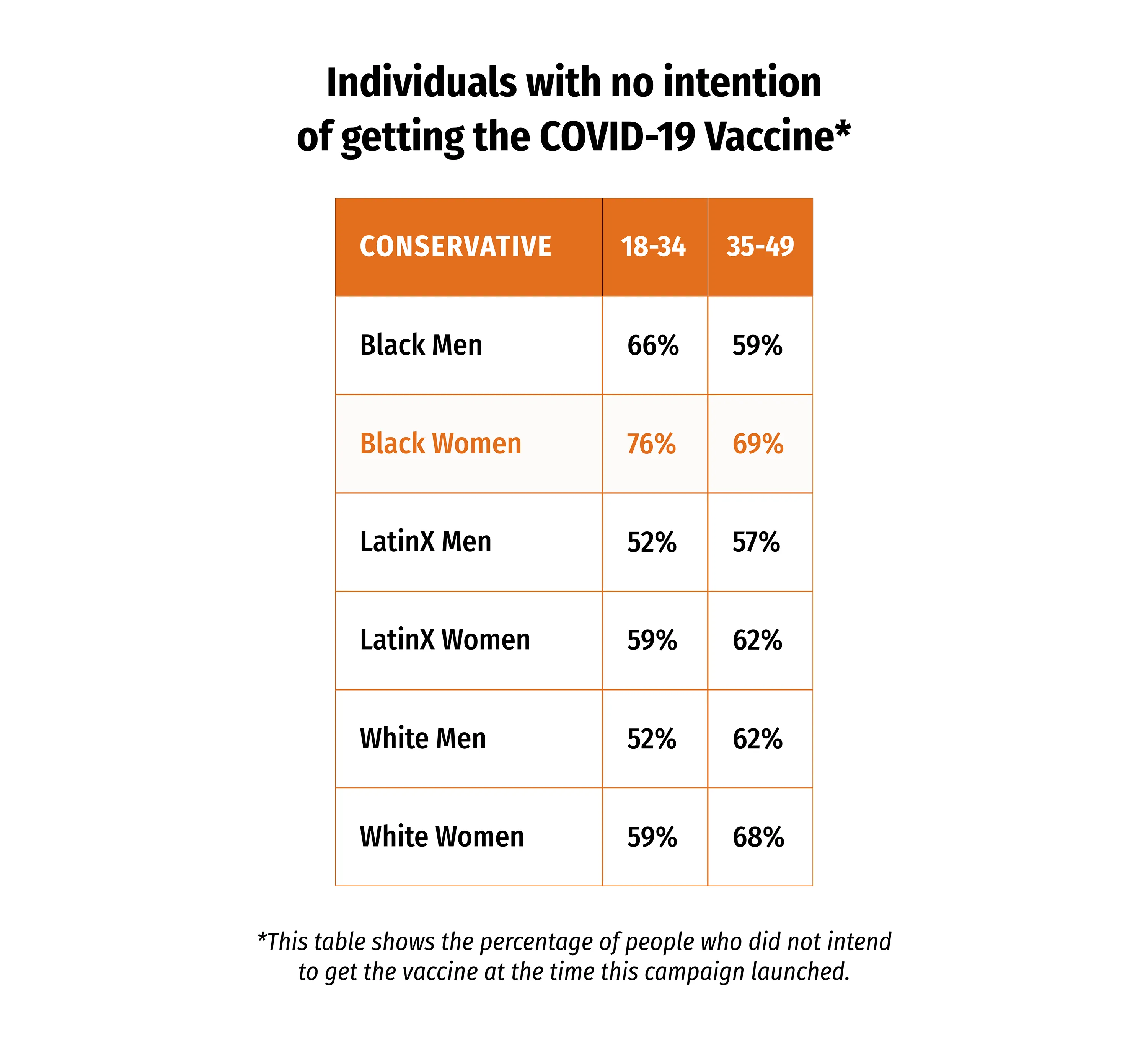Campaign Management
The ads in the series were optimized for reach and frequency. CARE aimed to reach as many people as possible with a frequency of at least 3 views.
Measurement, Evaluation and Learning
CARE set out with the same objective as we had on our first ad series: to increase our target audience’s belief that the COVID-19 vaccine was safe and that getting vaccinated against COVID-19 was important. Our lift study questions were the same in ad set 2 as they were in our first ad test. CARE USA ran its second ad series for four weeks, supported by a lift study to test the campaign’s efficacy in changing attitudes towards the vaccine. At the campaign’s conclusion, a the control group and those who experience the campaign were asked:
- Safety – How safe do you think a COVID-19 vaccine is for people like you? Target Answer(s): Very safe, Somewhat safe
- Importance – How important do you feel a vaccine is to prevent COVID-19? Target Answer(s): Very important, Somewhat important
Results
When we initially asked ourselves which messenger we believed would be most effective in changing attitudes, knowledge or behavior, we would have selected healthcare providers as most of the research coming out from the World Health Organization and others at the time suggested that most people were persuaded to get vaccines by trusted medical professionals. What we found surprised us. CARE’s most effective ads in this series were by far those with faith based leaders delivering the message. CARE included faith-based leaders in the series after a member of CARE’s Global Health team talked with us about hesitancy sometimes being driven be faith. Despite her counsel, we were not expecting the results we found.
This ad series leveraged $382,000 in ad credits donated by Facebook to reach 2M people with 13M impressions. Typically, a benchmark for success using Facebook’s lift study tool is to achieve a +3 point lift or better. In this series, CARE saw the following increases in belief that the COVID-19 Vaccine is safe:
- +7.9 point lift among 25-34 year old men; and
- +10.4 point lift among 35-44 year old women.
The strongest performing ad from the first series served as our control and continued to drive the most positive lift in the vaccine’s importance where it demonstrated a +3.6 point lift among 25-34 year old men.
During this campaign, we also included an outbound link to a vaccine information page on CARE’s website. From there, viewers could click through to the CDC’s website where people can find a vaccine appointment. CARE’s Google Analytics account showed that this ad set drove 37,000 unique pageviews to CARE’s web page and led to 2,500 outbound clicks to the CDC’s website demonstrating a 5.4% conversion rate.
What’s next?
Because the faith-based ads were so successful, CARE, in partnership with Facebook, is extending the run of the faith-based ads in the same states. We are reducing the target audience to correlate with the highest lift and will optimize the campaign for reach and frequency among 25-34 year old men and 35-44 year old women in ID, MT, ND, SD, KY, MO, WV, AR, TN, OK, LA, MS, AL, GA.
Additionally, we’re planning our third ad series. Recent U.S. hesitancy data show conservative adults ages 18-49 continue to have the most reservations about the vaccine. Barriers to vaccine acceptance include fear of side effects which includes concerns about the vaccine’s impact on fertility. Motivators may include reinforcing the truth about side effects while dispelling (without reinforcing) the myths about them. Additionally, appeals to this audiences values around freedom, choice, duty, and responsibility to protect family, community, and nation may also motivate a change in attitude and/or behavior related to the vaccine. CARE’s next ad series hopes to test messages promoting the truth about side effects against messages appealing to one’s sense of duty to see which performs better.
CARE also seeks to learn more about the correlation between online and offline behaviors. For this next ad series we intend to monitor the outbound clicks and conversions more closely to see if we can increase the conversion rate and total number of people clicking through to find a vaccine appointment.

